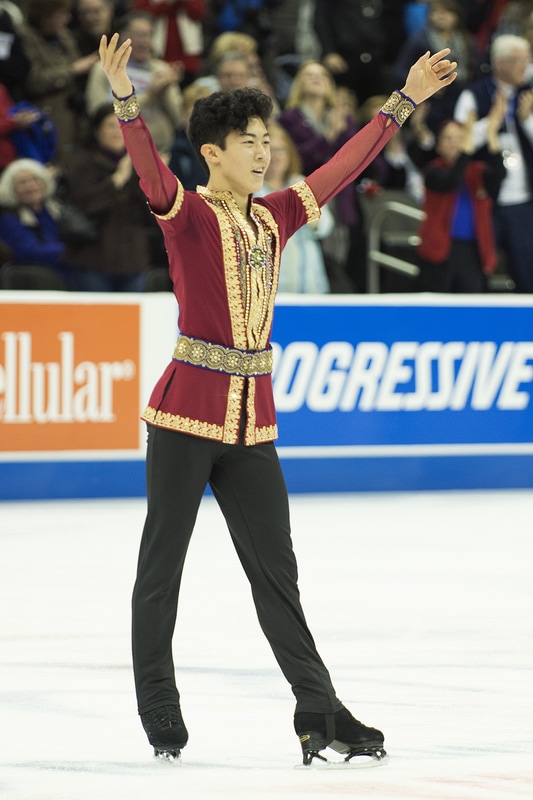|
Have you ever re-tweeted your own tweets so you could whine about the same thing twice? Sean Hannity has.
Last month, Ted Koppel ran a story on CBS Sunday Morning about the political divide and polarization in America. Most of the story included clips from various points throughout history, and a small portion featured an interview with Sean Hannity. The story was not a profile of Sean Hannity. Hannity’s comments were not the basis for the story. Yet between March 26th and 28th, Hannity tweeted and re-tweeted 23 times to complain that his interview was 45 minutes long and the portion CBS used was edited “unfairly.” He even went so far as to run a special feature on his own show about “The Anatomy of EDITED Fake News." The ALL CAPS in the title was OMINOUS and THREATENING, and I was waiting for an intense breakdown of Koppel's piece explaining how and why it was FAKE. Instead, Hannity spent his time connecting random, factually-dubious dots to create a CBS-fake-news-conspiracy-theory tracing back through generations of newscasters. Of course, Koppel being a contributor for CBS for one year makes him culpable as the leader of the CBS-fake-news army, right? It was painfully clear that there was no validity against anything Koppel did and Hannity was merely throwing spaghetti against the wall to see if it would stick. But the act of dedicating an entire TV segment to attack Ted Koppel brings Hannity’s usual banter to a new low. Ted Koppel is a legend who paid his dues and demands respect, yet Hannity declared him "not a journalist." The irony of Hannity thinking he understands journalistic integrity (or journalism in general) is rich. If Hannity understood journalism, he would know that interviewers give interviewees the basic idea of the piece, so Hannity knew it was not a profile and anything he said would be used merely as context. If Hannity understood journalism, he would know the interviewee has no rights to the final published story, so CBS can edit however they wish. Unless Hannity sues CBS for defamation and a court mandates the release of the full interview (which is not a winnable case) CBS does not owe Hannity anything. If Hannity understood journalism, he would know that editing is a necessary and standard practice. If it wasn’t, we would expect novelists to publish their first drafts and 20-minute segments on 60 Minutes would be 6 months long. Hannity’s definition of edited news being “fake” is incorrect and ridiculous. Hannity’s final tweets on the subject were perhaps the most telling to his attitude: “Hey John,” he responded to John Heilemann, “who called the election of 2016 correct? You told me @POTUS had ‘no shot’. And I am ‘bad for America’? This arrogance is laughable” Translation: I was right, you were wrong. Let me spit on the ground you walk on. Followed with, “I'm so thankful to expose ‘Edited Fake News’. I don't give a sh/;()$& what any media people think of me.” Translation: I don’t know how many characters to use to make up the s-word, so I’m just going to smack my keyboard for emphasis against those darn “media people.” And of course, only a true journalist would put his punctuation outside his quotation marks. Let’s all just be honest: no one noticed or cared that news pieces are edited until Hannity got his feelings hurt and cried to twitter about it. All he proved was despite his flippancy in assigning the term “angry snowflake” to others, he is the most appropriate definition of one.
0 Comments
SYCAMORE – Whimsical Perspective, a new store in downtown Sycamore, will open its doors Thursday. The shop is located in the Opera House building at 366 W. State St. on the corner of California and State streets. ... Laura Bright, owner of Whimsical Perspective along with her husband, Ron, hope to add a new, unique vibe to the downtown area. Bright has been posting on a blog under the same name for the past six years, featuring painted furniture pieces, DIY home décor and design, which will serve as inspiration for the store.
Unfortunately, Brown’s chances of medaling at World’s this year are nonexistent. Brown was forced to take his only quad jump out of his program after suffering an injury, and winning without a quad is a complete impossibility.
That was hardly the case a mere four years ago at Sochi. While the quad has been an occasional feature in men’s skating since the 1990s, most skaters have chosen to rely on the execution of other elements instead of adding the physically demanding quad. At the 2010 Vancouver games, American Evan Lysacek took home the gold without a quad, and in 2014, Canadian Patrick Chan earned the silver medal with only two quads. Just last year, Chan was still critical of skaters who attempted more than two quad jumps, stating “the quality of skating is diminished” because “what you're going to end up seeing is just people moseying down the ice and setting up for a quad.” Chan has three quads planned for this year’s Worlds, but has never landed all three in competition. That brings us to the second U.S. men’s representative, Nathan Chen, who is competing at the senior level for the first time this year. Chen instantly broke ground with a program that features 5 quads which he always lands, making him the only skater in history to land 5 in competition. Quad jumps earn higher point values due to their level of difficulty, so landing them gives Chen an instant upper-hand. It allowed him to beat reigning Olympic and World Champion, Yuzuru Hanyu of Japan, at Chen’s very first international competition last month. This sets a precedent that raises the standard for male skaters worldwide, and certainly makes Patrick Chan’s comments about three quads seem antiquated. While Chen’s quads are an incredible feat, the focus he puts on them during training takes time away from mastering his other components. Brown, on the other hand, earns some of the highest technical scores in the sport, but will still need to add at least 2 quads within the next year to remain relevant. The top Americans are playing catch-up in opposite ways – unfortunately for Brown, it will be harder to gain athleticism than it will be for 17-year-old Chen to refine his craft. To be successful at next year’s Olympics, skaters are going to need to bring both sides of the sport to the table: athleticism and artistry. For now, a quad can certainly bring excitement – as Patrick Chan said, they’re “a slam dunk contest,” – but the most memorable performances are owned by veterans who demonstrate the long-lasting tradition of the sport. Amy Alexander’s recent commentary, Today’s Feminism: Too Much Marketing, Not Enough Reality, attempted to critique flaws in third-wave feminism. We who call ourselves feminists should be open to constructive criticism in addition to celebrating our achievements as a movement, but Alexander did not offer anything substantive to the conversation.
First-wave feminism gave women the right to vote and own property – if you were white. Second-wave feminism championed equal pay and the dismantling of traditional gender roles – if you were white. Luckily, third-wave feminism has been defined by inclusivity, fighting for women of all races, religions, sexual orientations, and gender identities. The movement isn’t perfect by any means, but Alexander’s editorial was an unfulfilled argument built on unsubstantiated claims. Alexander made many bold assertions: 2017 Feminism’s equality messages are superficial and don’t address real issues. The Women’s March was “tone-deaf” to working-class black women. Women of color who spoke at the Women’s March are “superficial and insufficient,” and asking them to participate is an opportunistic scheme created by white women to feign unity. Leadership does not consider intersectionality important when demonstrated by women of color. These would all be important, scathing arguments if there were facts, quotes, or examples to back them up, but Alexander provided nothing to support her claims. Moreover, it would seem 2017 feminism can do nothing to appease her; if feminism doesn’t address black issues, but it’s also “insufficient” when black women speak to those issues in the name of feminism, how are black women supposed to have a voice and be heard? Tearing down a movement without a justifiable reason to be holding the sledgehammer doesn’t solve anything. If feminists, both black and white, spent more time striving toward common goals instead of constantly criticizing each other, true intersectionality might be achieved. |
Categories
All
Archives
June 2019
|




 RSS Feed
RSS Feed